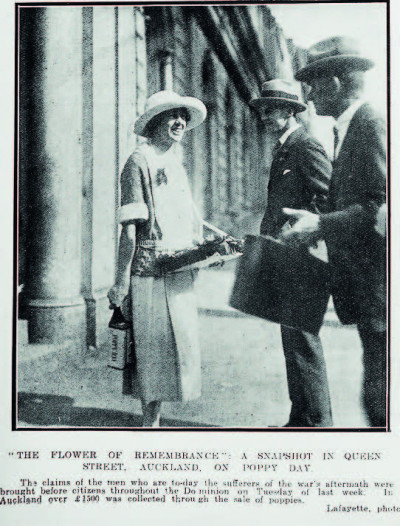100 Years of Poppy Day
100 Years of Poppy Day
In 1915 Lieutenant-Colonel John McCrae, a Canadian medical officer, conducted the funeral service of a friend who had died in the Second Battle of Ypres. Close by poppies blew in the breeze, a symbol of regeneration. McCrae wrote some verses in his notebook. It was the beginning of his famous poem In Flanders fields.
John McCrae’s In Flanders fields inspired American Moina Michael and she continued the chain of events beginning at that 1915 funeral.
Moina Michael set out to have the red poppy adopted in the United States as a symbol of remembrance. The American Legion adopted it at its annual convention in 1920. At that convention was Madame Guérin.

Photo credit: Auckland Libraries Heritage Collections AWNS-19230503-48-5
Madame Guérin conceived the idea of an Inter-Allied Poppy Day. A day to remember the fallen and also a day which funds could be raised for the women and children of France. She became known as ‘The Poppy Lady of France’, and she furthered perception of the poppy as an international symbol of remembrance.
Colonel Alfred Moffatt took the idea to the Royal New Zealand Returned Soldiers’ Association (RNZRSA) in 1921, and subsequently placed an order for silk poppies from Madame Guerin’s charity. However, the shipment arrived too late for Armistice Day, so the RNZRSA decided to hold it on the day before Anzac Day. The first New Zealand Poppy Day was held in 1922.
That Poppy Day raised £13,166 (equivalent to $1.34 million in 2020), of which £3,695 was sent to the people of the former battle grounds in northern France and the remainder went to unemployed New Zealand returned soldiers and their families.
For the following 100 years the Poppy Day Appeal continues to be held on the Friday before Anzac Day and continues to support veterans and their families.
